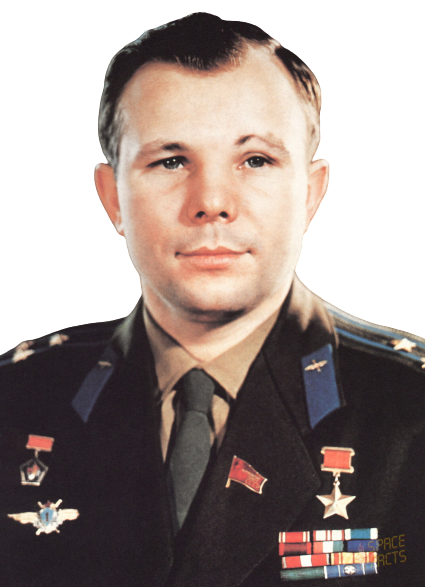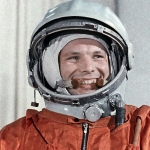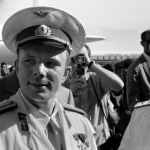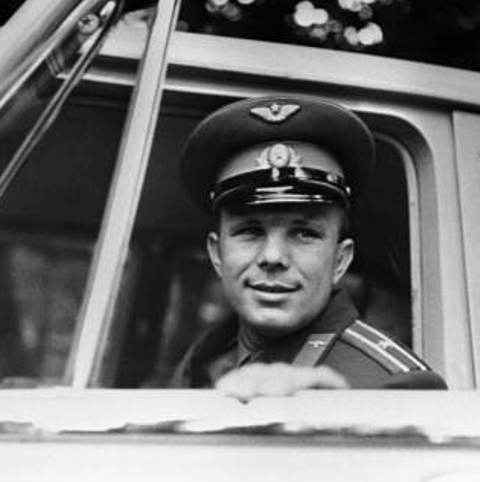
13.01.2023
Any book about Yuri Alexeyevich Gagarin emphasizes his connection with space, which is logical and justified. But often biographers cross the line between fact and fiction so far that even the semblance of credibility is lost. Referring to teachers, relatives and childhood friends, it is proved that Gagarin from his childhood was going to fly between the stars, dreamed of meeting extraterrestrials, studied astronomy, studied Tsiolkovsky, lectured everyone around him about rockets, spacecraft, expeditions to the Moon and Mars. There are many examples of this kind, but I will quote here only one of his biographers, Colonel Victor Anatolievich Mitroshenkov.
I must say that upon first glance at his texts, one gets the impression that one could not find a better biographer than Mitroshenkov. He has no equal in abundance of citations, the list of sources he uses, or his meticulous approach. Moreover, he is the only one who reconstructed Gagarin’s life day by day, and in some cases by the hour! Mitroshenkov not only published author’s books like “The Blue Vertical” (1976), “Blue Roads” (1976), “Milky Circle” (1980), “Earth Under Heaven” (1981, 1987), “Beyond the Horizon – Far” (1981), “The Wind of the Universe” (1983), but he also often compiled collections, involving the direct participants in the events: “The First Cosmonaut of Planet Earth” (1981), “Conquering Infinity” (1981), “Son of Earth” (1983), “High Orbits” (1985), and “Constellation” (1989). An additional plus – he was also a pilot, like his characters, served in the units and headquarters, took part in nuclear weapons tests, so he had the right to be called a competent specialist. Of course, in his books about Gagarin there are occasional inaccuracies, but even recognized historians are not exempt from them, and Mitroshenkov was not a professional historian and could afford some liberties.
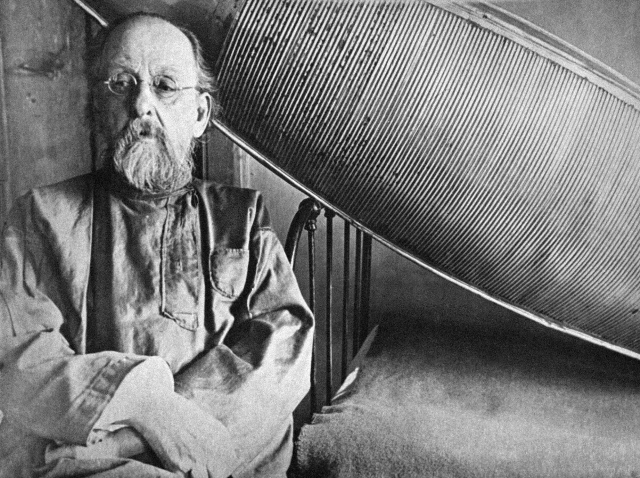
Unfortunately, more serious claims can be made to his works. They periodically quote letters and diaries of Yuri Gagarin, which are full of anachronisms, that is, details that the first cosmonaut could not have picked up at the time when he allegedly wrote them down. In addition, Gagarin appears to be an intellectual titan, who reads quite specific books for fun. Let’s not be unsubstantiated – let’s open the book “Earth Under Heaven” (1987 edition):
“December 8 [1957]. Went skiing in the morning. After college, ten kilometers is not a distance. Then was in the club for rehearsal. During the break, I took a story by K. E. Tsiolkovsky “Off Earth” from the library.
His urge for works of the great rocket-dynamic scientist seized him with renewed vigor. In the evening he read. ‘…’
December 31 [1957]. Late in the evening he would perform in a holiday concert, reading Blok, singing with his Orenburgers. And now, lying on his bed, feeling the warmth and enjoying the semi-darkness created by the table lamp, he was rereading Tsiolkovsky for the umpteenth time, immersed in the world of the inhabitants of the mountain castle [the characters in Tsiolkovsky’s story ‘Off Earth’]: the Russian Ivanov, the Italian Galileo, the German Helmholtz, the American Franklin, the Frenchman Laplace, the Englishman Newton. ‘…’
January 6 [1958]. Prepared for a political class. In addition to the obligatory material in the program, he wanted to tell the audience about the rocket in which Tsiolkovsky sent the inhabitants of a beautiful castle located in the spurs of the Himalayas to fly around the Earth. Gagarin wrote down the scientist’s true words: “…it was a long body, the form of least resistance, a hundred meters long and four meters wide, something like a giant spindle. It was divided by transverse partitions into twenty compartments, each of which was a jet instrument…”
March 1 [1958]. ‘…’ They talked about their profession, about the experience of military pilots, about the imminent flight into outer space, about the settlement of the vast expanse of the universe, about life on Mars and Venus. Gagarin supported the conversation and expressed the views of Konstantin Eduardovich Tsiolkovsky.
Tsiolkovsky viewed the Earth as a particle, an element of the giant Galactic system. He assumed the influence of intelligent beings on the development of the universe, the influence of mind on the structure of the universe. Konstantin Eduardovich wrote that there is no end to life, no end to reason and its improvement. Its progress is eternal. ‘…’ April 12 [1958]. On Saturday, Yuri gave up the traditional baths and the concert at the Officers’ House in the garrison. I wanted to be alone, to read. Yuri opened at random a book by his favorite author.

“Attempts by higher beings to help us are possible,” wrote K. E. Tsiolkovsky, “because they continue even now. Reflections on the contemplation of the universe could also serve as a basis for belief in higher beings. But few people know both. It is not obvious to everyone. We humans do not try to convince animals of the irrationality of their lives because it is impossible-so great is the distance between man and animal. The distance between us and perfect creatures is scarcely less, if we take the average human being into account. On the other hand, Australians and Americans have waited thousands of years for Europeans, but they waited. We shall also wait.
That is all Tsiolkovsky instead of baths, concerts and other pleasures. Science fiction story “Off Earth”. And the extensive quote is probably from it, too…? Doesn’t that confuse you? I think it does. It’s hard to imagine that a young healthy guy, a lieutenant, a fighter pilot, who loves sports, jokes and funny conversations, at the age of twenty-four would prefer Tsiolkovsky to ordinary pleasures of life.
But that, perhaps, is not the strangest thing in this fragment. We noted above that Gagarin could not read the story “Off Earth” until 1958, when it was finally published in two editions and in mass circulation (until then it was available only to a narrow circle of specialists). Of course, there were all sorts of shortages at the Luostari store, including television sets, but the garrison library was unlikely to find a single copy of the rare small-circulation 1920 edition. As for the extensive quotation, it is certainly not from “Beyond Earth,” nor are the considerations about the “gigantic galactic system” allegedly shared by Gagarin. For the first time the Soviet reader was able to read both the quote and the considerations in Mikhail Saulovich Arlazorov’s book Tsiolkovsky, published in… 1967 – ten years after the events described by Mitroshenkov! Let’s take another fragment:
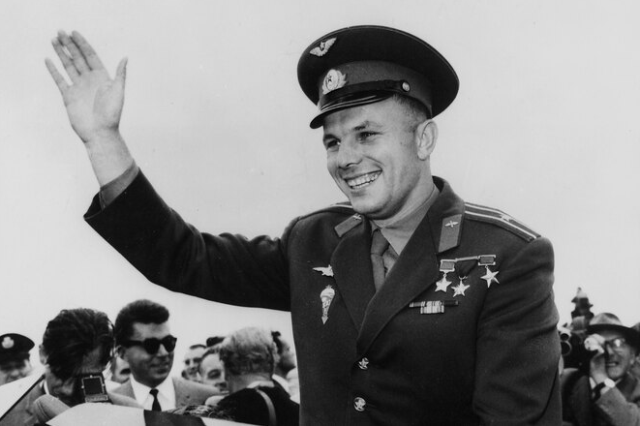
“May 28 [1958]. On the flight, Dergunov told Gagarin that there was a book called Introduction to Cosmonautics, a pre-war edition, its author a Pole by nationality, now living in the USSR, Ari Sternfeld, that he had not yet read, but he was promised to get it.
Curiously, not only would Yuri later meet the author of the book, but they would be awarded the international Galaber Prize together in 1963. Ari Abramovich Sternfeld would give Yuri Alexeyevich his book ‘Artificial Earth Satellites,’ published before the launch of the world’s first Soviet satellite. ‘…’
June 3 [1958]. Gagarin slept for almost twelve hours. Tired as if there was no fatigue. The mood was good. The sunny weather contributed greatly to cheerfulness and merriment. Nikolay Repin and Yuri Dergunov suggested we go for a walk, to stretch our legs.
“I read “Introduction to Cosmonautics,” said Dergunov, capturing everyone’s attention as usual. – “By the way, Sternfeld introduced the word ‘cosmonaut’ into scientific terminology”. ‘…’
Yuri Gagarin will read the book “Introduction to Cosmonautics,” especially carefully read the third part, “The Way of the Spaceship.” In the fourth chapter, “Artificial Satellites,” Sternfeld wrote: “When the first space speed is reached, the question of building an inhabited artificial satellite orbiting the Earth or another planet outside its atmosphere will be on the order of the day”.
Here already Yuri Dergunov looks like a titan of thought, piercing through the future. To begin with, the word “cosmonaut” will become commonly used only in three years; until then the scientific terminology used only the word “astronaut”, in the press – “astroletcher” or “stargazer”. Where did Dergunov took the book “Introduction to Cosmonautics”, published in 1937 with a circulation of 2,000 copies and little known at the time even among specialized professionals, remains a mystery. But the most surprising thing in this story is that Dergunov and Gagarin, according to Mitroshenkov, read it. The fact is that “Introduction to Cosmonautics” by Sternfeld is a purely scientific work, more than three-quarters of which consists of formulas, graphs and tables; it is impossible to read this book, and should be used only as a reference book if someone wants to calculate the optimal trajectory of a spacecraft through the solar system.
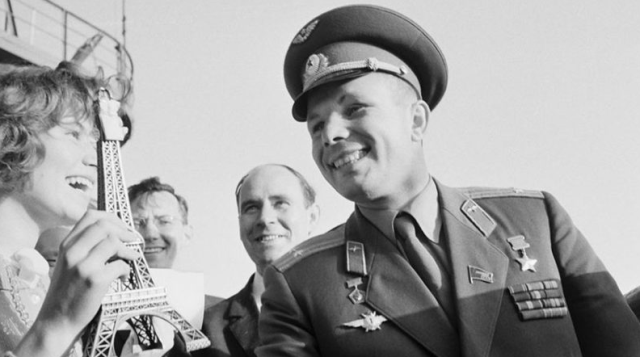
I believe that Dergunov and Gagarin were passionate about astronautics, but not so much as to accept that they spent their summer days off instead of sports, fishing, and hunting studying a work designed for people with higher education and narrow specialization. Unfortunately, such “pearls” undermine the credibility of other fragments of the chronicle as well. Here, for example, is a piece to which many biographers refer as proof that Gagarin was really keen on cosmonautics during his service in the North: “On January 6 [1958]. ‘…’ Wrote a letter to his older brother Valentin: ‘I am so ill that I cannot convey my sufferings in one letter,’ Yuri wrote. – I can’t tell anyone about my experiences. I even dream of ships, rockets, the dark immeasurable space, asteroids and the “little prince” … Space has become an agenda, like a virgin. The system of our life is closed, the cosmos cannot exist without any function… Tsiolkovsky writes, and I read him almost daily (an old technical school attachment), that in the cosmos reigns a harmonious mind. This, of course, is not mysticism, but simply a well organized structure of the cosmos, working on the well-adjusted mechanism of physical laws”. This fragment again refers to philosophical heritage of Tsiolkovsky, which was not available to general public in original until 1990s, precisely because communist ideologists saw in it not “mysticism”, but idealistic metaphysics. Mitroshenkov tried to portray Gagarin as a follower of Russian cosmonautics, but overdid it, because Gagarin never was a cosmonaut in the classical sense, because the doctrines of this doctrine (if we can speak of doctrine at all in this case) come into conflict with the way he perceived and understood cosmonautics. So now think, what in the cited quotation from the letter to his brother belongs to the cosmonaut, and what was invented. Maybe there was no such letter…?
However, even if we discard fictions of biographers, we cannot deny the obvious: the space influenced more and more on the thoughts of Yuri Gagarin and his colleagues. Seeing that the topic was of concern to the world community, the propaganda turned on full blast, glorifying space successes and prospects. While the Soviet Union had been wary of extraterrestrial issues (in some periods they even equated excessive enthusiasm for cosmonautics with “homeless cosmopolitanism”), now it became very much in vogue. And all this was perfectly in line with the worldview and expectations of the future cosmonaut.
In 1958 the third artificial satellite, the Object D, which never became the first, was finally launched. Since it was heavier than the previous ones, a rocket was developed on the basis of the R-7, which differed from the original one in the thrust of the propulsion systems. Many technologies were used for the first time, and having been tested on the Object D, then found application in the design of manned spacecraft. For example, in addition to chemical batteries, the satellite was equipped with sections of semiconductor solar panels. To prevent overheating, which destroyed Laika, the temperature inside the sealed housing was regulated by forced circulation of coolant (nitrogen gas), and most importantly, by changing its radiation coefficient: to this end, sixteen sections of automatically controlled shutters were installed on the side surface of the satellite. Special attention was given to data collection, processing, storage and transmission systems. The satellite carried twelve scientific instruments capable of measuring pressure, ionic composition of the atmosphere, strength of electrostatic and magnetic fields of the Earth, corpuscular radiation intensity of the Sun, the intensity of primary cosmic rays and micrometeoroid impacts.
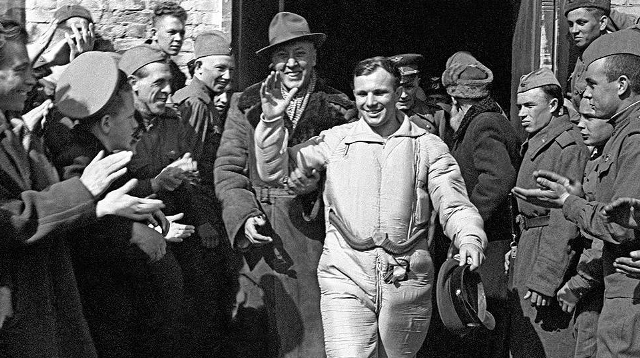
Between October 1957 and March 1958, four R-7 rocket packages were manufactured: two were sent for ground testing and two (No.B1-1 and B1-2) were sent to Tyuratam test site. The first launch of the modified rocket № B1-1 with the object “D-1” was held April 27, 1958, but the satellite did not reach orbit because of the death of the carrier: in the 89th second there were resonant vibrations of side units, which in seven seconds led to the destruction of the rocket. “R-7 rocket crashed on the territory of the launch range, 100 km from the launch site. The satellite broke off, fell separately, and apparently that’s why it survived. “D-1” was brought to the assembly and testing building and opened up. The failed spacecraft sparked and burst into flames – there was a short circuit of the wires. Of course, the rocket accident and the very fact of launch were classified; historians learned about them only decades later.
Designer Boris Chertok recalled (I quote from the book “Rockets and People. Fili – Podlipki – Tyuratam”, 1999): “[Mstislav Vsevolodovich] Keldysh and the entire young space science community were in mourning. But Korolev did not give up.
The plant was assembling a double of the satellite. SP [Sergei Pavlovich] gathered all his cronies, announced that, despite the failure, everyone would be paid a large bonus on the condition that everyone stay at the test site and prepare the next launcher. The launch should take place in the middle of May. He flew with Keldysh to Moscow to force the preparation of a new third satellite. It was not an easy decision, but there was no way out. The commitment to launch a “scientific laboratory in space” had already been given to Khrushchev.
Finally, on May 15, 1958, the rocket number B1-2 was successfully launched. The third artificial satellite of the Earth with the mass of 1327 kg took an orbit which was close to the designed one (inclination – 65.2°; perigee altitude – 226 km; apogee altitude – 1881 km; orbital period – 105.95 minutes). It was active there until June 3, 1958. It left orbit only on April 6, 1960, after 10,037 orbits around the Earth. From its many instruments, abundant telemetry was obtained, and subsequently, a rich scientific “harvest.”
Probably the most significant discovery made by Object D was related to powerful radiation belts, the existence of which science did not even suspect before 1958. Again we turn to Chertok’s memoirs:

“One of the sensational results obtained with the scientific instruments of the third satellite was the discovery of a high concentration of electrons at high altitudes, beyond the already known ionosphere. Sergei Nikolaevich Vernoe, professor at Moscow State University, the author of these studies, attributed this phenomenon to secondary electron emission – the knocking out of electrons from the metal of the satellite during collisions with high-energy particles – protons and electrons. I remember his enthusiastic report on this subject at the meeting at Keldysh, where scientists reported the results of scientific research on the third satellite.
Two years later, however, J. Van Allen, an American physicist, proved that what was measured by the instruments of the third satellite was not in fact a secondary emission, but the registration of primary particles of previously unknown radiation belts of the Earth. That is why the Americans called these radiation belts “Van Allen belts”. In Vernov’s defense, it must be said that he made a mistake due to the failure of the telemetry memory device on the satellite. Vernoe was not able to get radiation activity measurements over the entire turn. He received measurements only in the direct reception mode when the satellite flew over Soviet territory.
Van Allen made his discovery using measurements from an American satellite. He showed that there is a region in the near-Earth space, where the magnetic field of the Earth keeps the charged particles (protons, electrons and alpha-particles), which have a high kinetic energy. These particles do not leave near-Earth space, being in the so-called magnetic trap.
This discovery was a great scientific sensation. For astronautics it had an important practical value. Spacecraft whose orbits passed through the radiation belts received considerable irradiation, in particular, destruction of the structure of photoelectronic solar cell converters. For manned spacecraft, a long stay in these belts is generally considered unacceptable.
After the publication of Van Allen’s discoveries, we decided, albeit belatedly, to correct the mistake made due to the failure of the storage device on the third satellite. In our literature, the radiation belts became known as the Van Allen-Vernov belts.
This story was a good lesson for scientists, showing how reliable direct measurement instruments and on-board service systems are needed to store and transmit the data they receive to Earth. Unfortunately, the reliability of instruments for scientific research remained a weak point of our astronautics in the following years”.
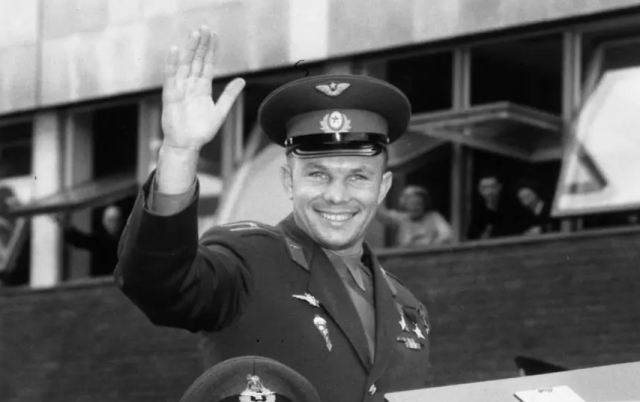
In addition to scientific results, the first Soviet satellites had a huge impact, fundamentally changing the balance of power on the geopolitical arena. Although Americans managed to launch first “Explorer”, and then “Vanguard” (their mass was 13.9 and 1.47 kg respectively), against the background of even the lightest “PS” (83.6 kg), they just lost out. Nikita Khrushchev ironically said: “The US would have to launch many satellites the size of oranges to catch up with the Soviet Union.
Yuri Gagarin also remembered the triumphant launch of Sputnik-3. Here’s what he wrote later in his book:
“How will it go from here?” – I thought, looking at the silvery greenish light of the moon in the high sky. To think – our first satellite circled around the Earth a thousand and 400 times, and the second made almost a thousand revolutions more, covering a path of over a hundred million kilometers. We carefully read the remarkable results of radio and optical observations of the first two satellites, discussed the results of their studies of atmospheric density, ionosphere, cosmic radiation, and various biological data. We were concerned with the conclusions of
scientists who claimed that living beings satisfactorily endured the conditions of space flight. It was clear that all this was being done for research whose ultimate goal was to ensure human spaceflight.
Somehow I heard:
“I don’t use a satellite, I live quite well without one”.
It was philistine talk. It could have gone so far as to say: I don’t use the telegraph, I don’t listen to the radio, I don’t ride in trains, and I’m fine without them.
I understood that the government spared no expense on everything related to space exploration, and it seemed to me that several thousand, perhaps even tens of thousands of specialists in various fields of science and technology worked selflessly to solve the most ambitious task ever set before humanity.
The radio transmitted comparatively meager news of the flight of the new satellite. Central newspapers came late to our distant garrison, as did letters. But we waited for them impatiently and often visited the post office. And at last Pravda, which was almost entirely devoted to the description of the third Soviet artificial Earth satellite, arrived. The paper included new information about the satellite’s orbit, observations of its flight, and, most important, details about the satellite’s structure. It was, in the full sense of the word, an automatic scientific station in space. The article was written lucidly, in popular language.
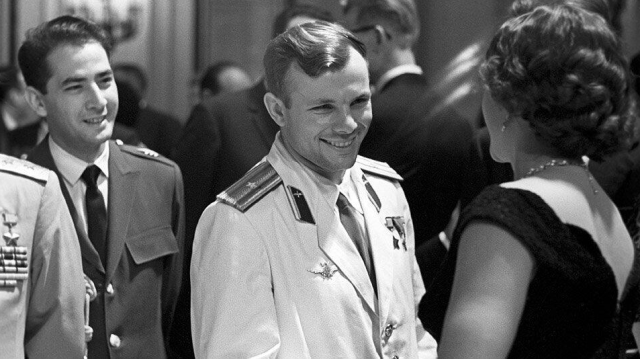
Almost the whole newspaper was scribbled in colored pencils, and our notes dotted the margins. Soon a regiment engineer gave a lecture about the triumphs of our scientists in the conquest of outer space. Almost all the officers came for the lecture, many with their wives and children. I watched as the eyes of teenagers lit up when the lecturer said that soon people would fly to the nearest planets. They were no longer interested in planes – they saw them every day – now the hearts of the boys were given to a new love – spacecraft, which no one could yet imagine.
Gagarin himself was such a boy at the time – eager and eager to discover new horizons. Pay attention to his attitude to the very idea of artificial satellites – as a romantic, taking into account the requirements of pragmatism. Satellites are not only beautiful and majestic, but also necessary for the development of mankind, just as a radio and a steam engine were necessary. Nothing in common with homegrown cosmism, which appeals to “galactic systems” and “supreme beings”.
Speaking of beings. Around the same time, the garrison library received Ivan Antonovich Efremov’s novel The Andromeda Nebula (1957), which turned out to be a “very timely book. It painted a broad panorama of the world of victorious communism. The most important thing is that the great science-fiction writer, for the first time, linked the establishment of the communist system with extraterrestrial expansion and proved that one without the other is impossible, that if somewhere in the universe there are intelligent beings who entered space and began interstellar navigation, then they inevitably had to build “the fairest society” without nations, classes and borders.
Yuri Gagarin got it right. He later wrote:
“We took turns reading it [“Andromeda Nebula”] in our room. We liked the book. It was more significant than the science fiction novels and novellas we read as children. We liked the colorful pictures of the future painted in the novel, we liked the descriptions of interstellar travel, we agreed with the writer that the technological progress achieved by people several thousand years later would have been unthinkable without the complete victory of communism on earth”.
It should be noted that Gagarin could not in principle separate space progress from communist ideology. Why would he separate? Everything around him proved: it was the Communists with the support of the Soviet people who managed not only to win a terrible devastating war, but also to raise a huge country from the ruins, after which they were the first to make an incredible breakthrough into space. The future was painted in a rosy light, because even Ivan Yefremov shifted the timing of his utopia: if the first magazine publication of the novel “The Andromeda Nebula” action takes place three thousand years after the XX century, in the first book – a thousand years (“ten centuries”). Also, of course, not tomorrow, but not the day after tomorrow.
Of course, Yuri Gagarin could not assume that in just three years he himself would become the embodiment of the bright future described in the novel.
